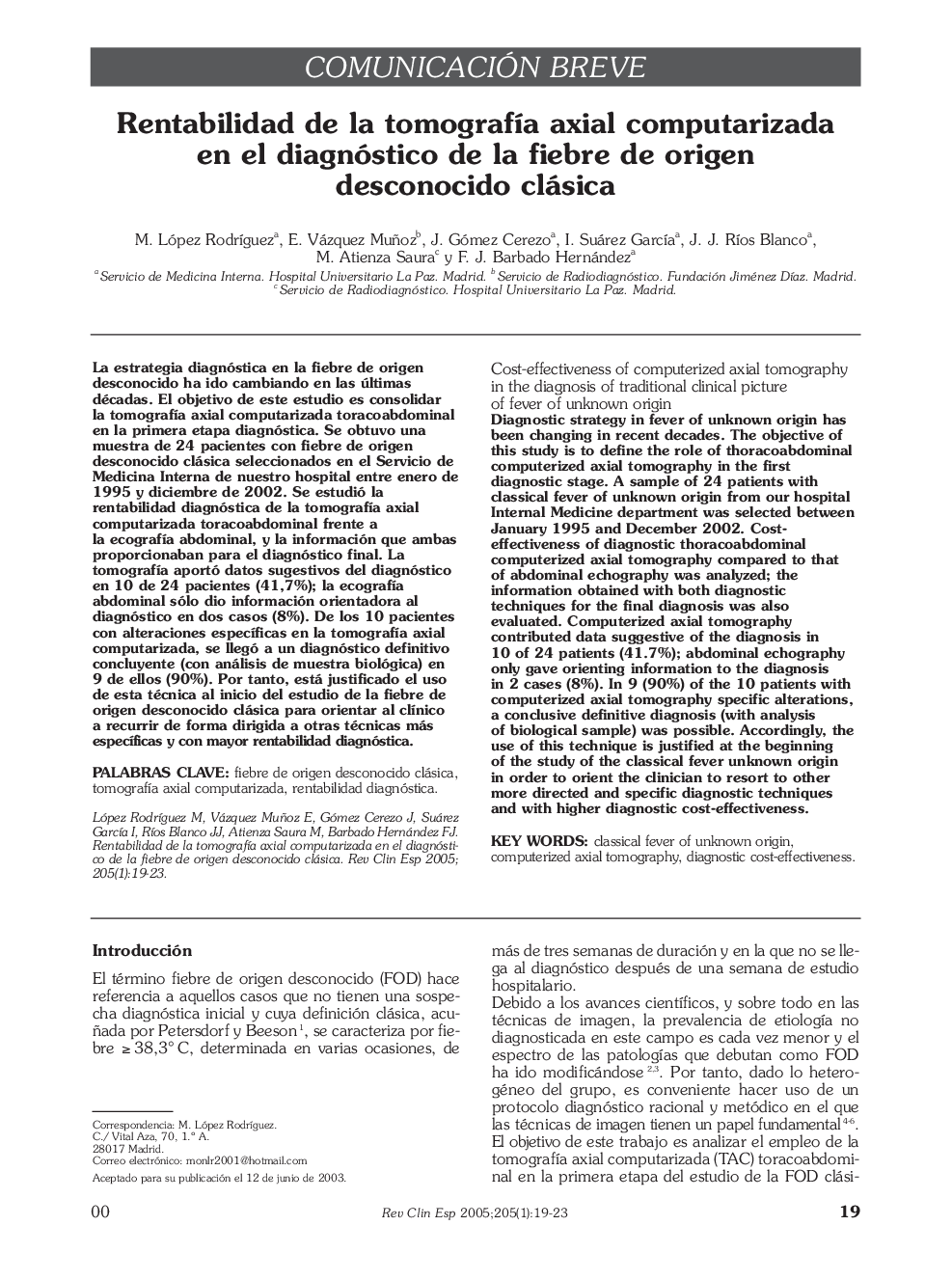| Article ID | Journal | Published Year | Pages | File Type |
|---|---|---|---|---|
| 9303937 | Revista Clínica Española | 2005 | 5 Pages |
Abstract
Diagnostic strategy in fever of unknown origin has been changing in recent decades. The objective of this study is to define the role of thoracoabdominal computerized axial tomography in the first diagnostic stage. A sample of 24 patients with classical fever of unknown origin from our hospital Internal Medicine department was selected between January 1995 and December 2002. Costeffectiveness of diagnostic thoracoabdominal computerized axial tomography compared to that of abdominal echography was analyzed; the information obtained with both diagnostic techniques for the final diagnosis was also evaluated. Computerized axial tomography contributed data suggestive of the diagnosis in 10 of 24 patients (41.7%); abdominal echography only gave orienting information to the diagnosis in 2 cases (8%). In 9 (90%) of the 10 patients with computerized axial tomography specific alterations, a conclusive definitive diagnosis (with analysis of biological sample) was possible. Accordingly, the use of this technique is justified at the beginning of the study of the classical fever unknown origin in order to orient the clinician to resort to other more directed and specific diagnostic techniques and with higher diagnostic cost-effectiveness.
Related Topics
Health Sciences
Medicine and Dentistry
Medicine and Dentistry (General)
Authors
M. López RodrÃguez, E. Vázquez Muñoz, J. Gómez Cerezo, I. Suárez GarcÃa, J.J. RÃos Blanco, M. Atienza Saura, F.J. Barbado Hernández,
